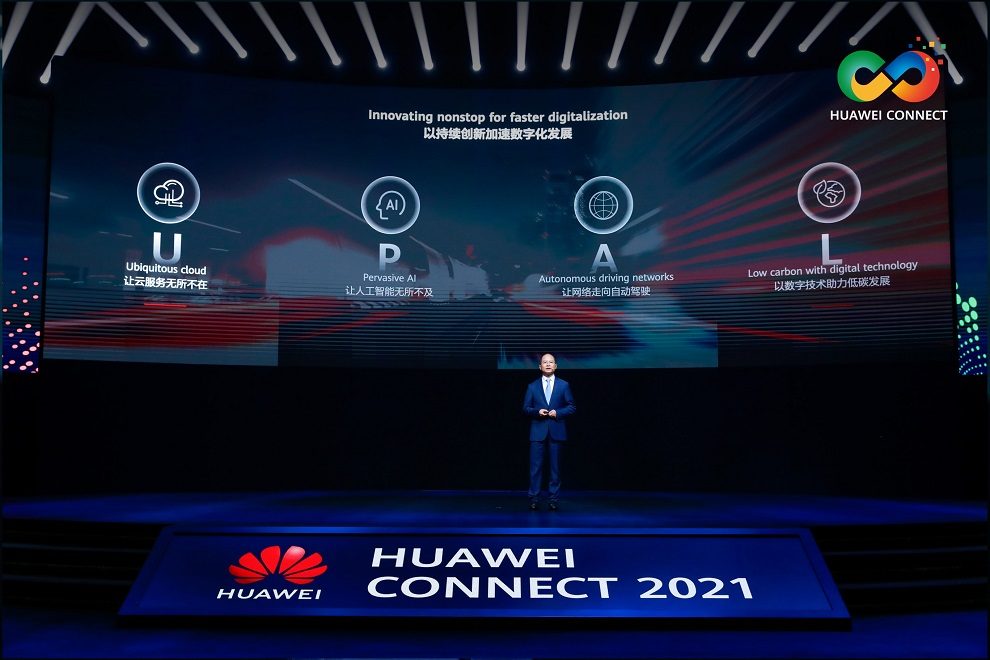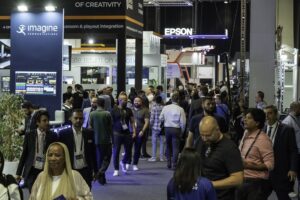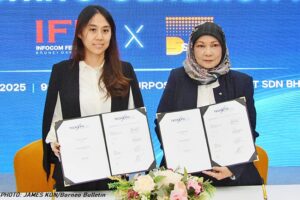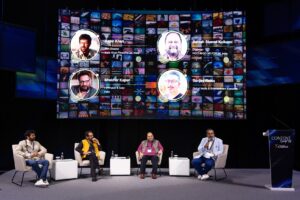On the sidelines of HUAWEI CONNECT 2021, the company’s annual flagship event for the global ICT industry, Huawei reaffirmed its commitment to green ICT innovation that makes products more energy efficient. “We are also working to promote the low-carbon development of the ICT industry as a whole. For decades, we have been innovating to reduce energy consumption and emissions of our equipment and solutions. By 2025, Huawei products will be 2.7 times more energy efficient than in 2019,” said Karl Song, VP of Global Communications, Huawei.
The announcement was made at a critical time where more and more countries are prioritizing their sustainability goals. The EU aims to become carbon neutral by 2050. China aims to reach peak emissions by 2030 and become carbon neutral by 2060. To meet these goals, digital technology will be key to reducing emissions across all industries. According to the World Economic Forum, by 2030, ICT will help reduce industrial emissions by 12.1 billion tons. This is 10 times greater than the emissions by the ICT industry itself.
Song further added that ICT is also enabling other industries to conserve energy and cut emissions. For example, in smart transportation, our traffic light management solution helps reduce urban traffic congestion and cut emissions.
“In terms of green energy, Huawei has set up a digital power company that integrates digital and power electronics technologies. We use bits to manage watts, and provide green and intelligent solutions in five fields: clean power generation, energy digitalization, transportation electrification, green ICT infrastructure, and integrated smart energy. We are working to drive the shift towards low carbon, and ultimately zero carbon,” stated Song.
In his keynote speech at HUAWEI CONNECT 2021, Huawei Rotating Chairman Eric Xu highlighted how helping industries go digital is a critical aspect of Huawei’s mission to bring digital to every person, home and organization for a fully connected, intelligent world. He said, “Digital development relies on digital technology. For digital technology to stay relevant, we must continue to innovate and create value. Cloud, AI, and networks are three critical digital technologies.”
At the event, Xu launched the industry’s first distributed, cloud-native service called UCS – a ubiquitous cloud-native service available on HUAWEI CLOUD. With UCS, Huawei plans to provide enterprises with a consistent experience while using cloud-native applications that are not constrained by geographical, cross-cloud, or traffic limitations, thereby accelerating digital transformation in all industries.
HUAWEI CLOUD also announced two new regions, and ten new services including MacroVerse aPaaS, OptVerse AI Solver, HUAWEI CLOUD Stack 8.1, Pangu drug molecule model, and SparkRTC. It was also revealed that the first virtual human, Yunsheng, is set to join HUAWEI CLOUD.
Xu added that HUAWEI CLOUD, the company’s cloud service that was launched just four years ago, has already brought together more than 2.3 million developers, 14,000 consulting partners, and 6,000 technology partners, and also made more than 4,500 services available in the HUAWEI CLOUD Marketplace. It has become an important platform for Internet companies, enterprises, and governments alike to take their organizations digital. As of September 2021, HUAWEI CLOUD and partners operate 61 Availability Zones (AZs) in 27 geographic regions worldwide, covering more than 170 countries and regions.
Huawei’s full-stack, all-scenario AI portfolio released back in 2018 is also progressing as expected. Its MindSpore framework has become the mainstream AI computing framework in China. Meanwhile, the Atlas 900 cluster, as well as the cloud services based on it, currently serve more than 300 enterprises, supporting the training of many models, which include the HUAWEI CLOUD Pangu large models. HUAWEI CLOUD ModelArts has made AI application development incredibly simple with its full-pipeline, scenario-based services. The end goal of ModelArts is to enable each and every engineer to independently develop their own AI applications.
Xu also introduced Huawei’s innovations in the network domain. As organizations go digital, they tend to see exponential growth in network complexity. To tackle this, Huawei has been innovating solutions for global networks based on the concept of autonomous driving network (ADN). The company has been working with customers in the finance, education, and healthcare sectors to innovate and deploy new applications, and build networks that are self-fulfilling, self-healing, self-optimizing, and autonomous.
Xu went on to explain how Huawei is using digital technology to support low-carbon development, as part of global efforts to achieve peak CO2 emissions and carbon neutrality.
Huawei hosts HUAWEI CONNECT 2021 online from September 23 to October 31. The theme of this year’s event is Dive into Digital. The company will dive deep into the practical application of technologies like cloud, AI, and 5G in all industries, and how it can make organizations of all shapes and sizes more efficient, more versatile, and ultimately more resilient as we move towards economic recovery.












